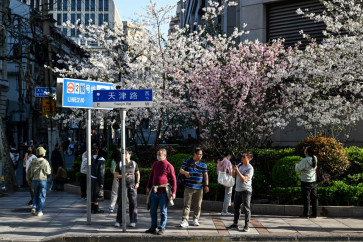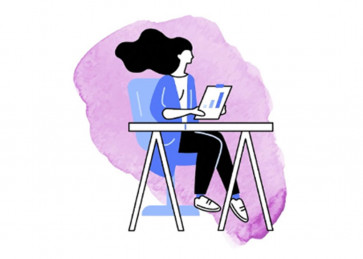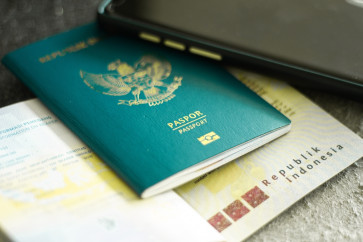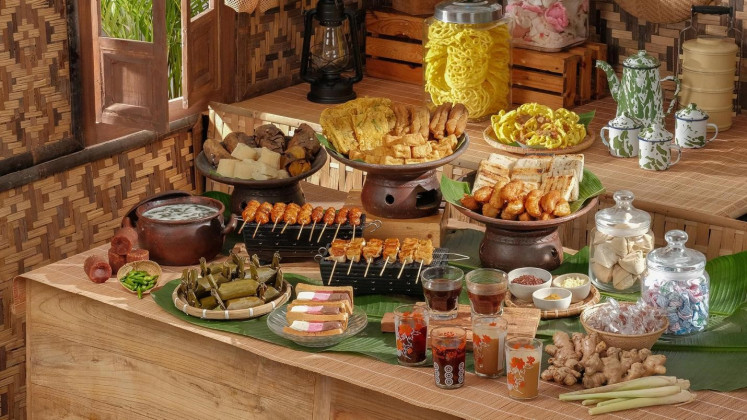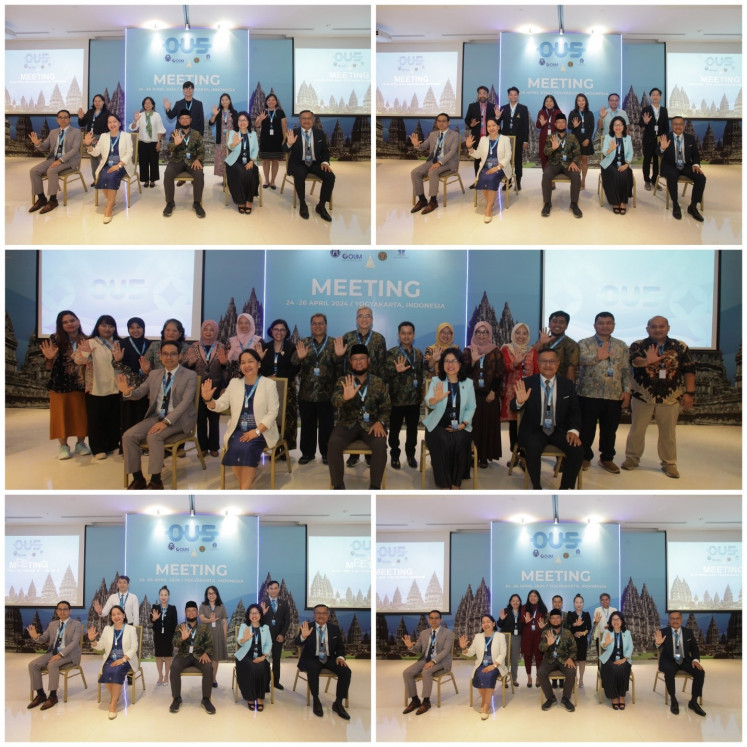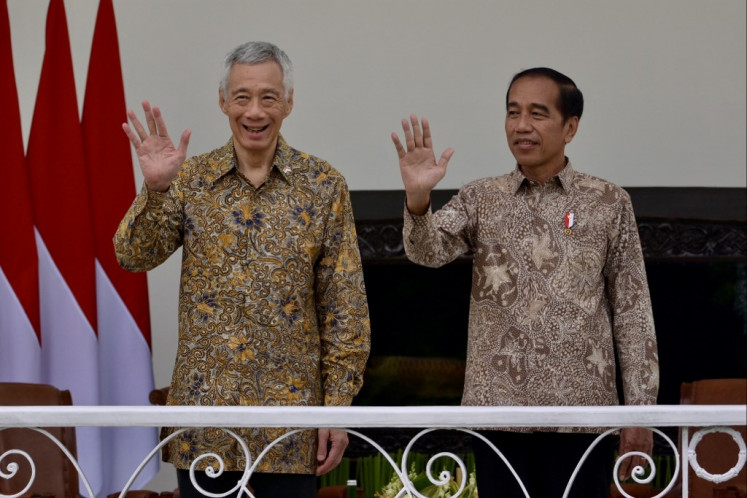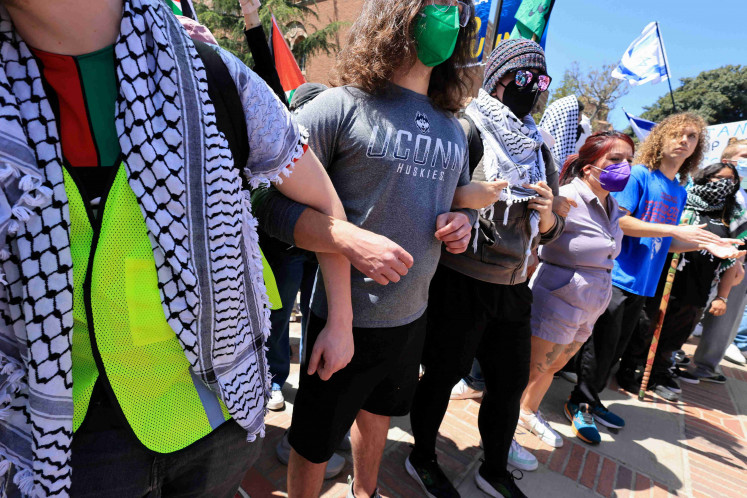Understanding Sriwijaya through artifacts, books and discussions
The adage "those who do not know history are condemned to repeat it" may be applicable to the pride many Indonesians feel for the great ancient kingdom of Sriwijaya, which rose to power in South Sumatra in the seventh century, and controlled international trade for 500 years before facing its terminal decline around the 12th century.
Change Size
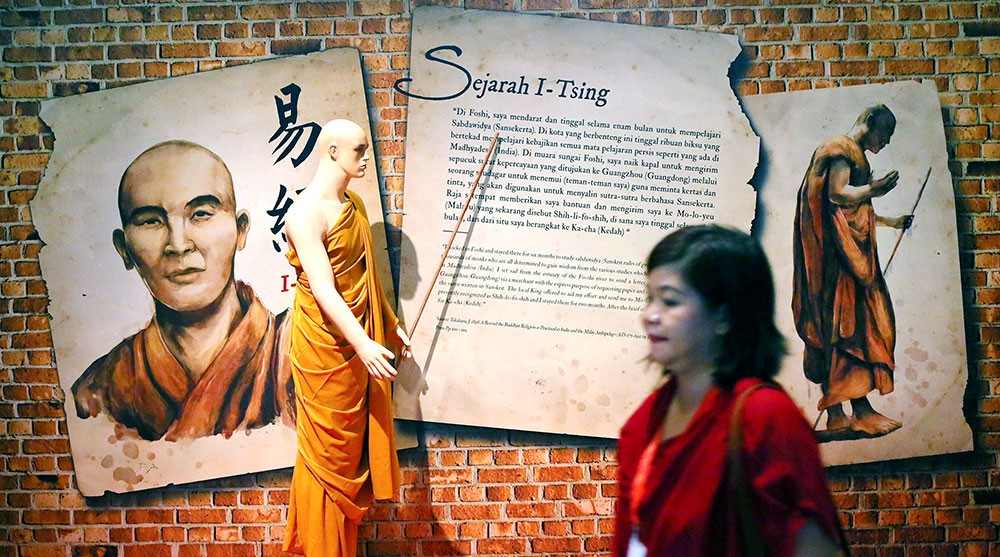 Foreign guest: A visitor walks by an information panel on I-Tsing, a Chinese Buddhist monk that visited the Sriwijaya kingdom in 671 AD. (JP/Seto Wardhana )
Foreign guest: A visitor walks by an information panel on I-Tsing, a Chinese Buddhist monk that visited the Sriwijaya kingdom in 671 AD. (JP/Seto Wardhana )
Learning from history remains an abstract concept for many.
Sebastian Partogi, The Jakarta Post, Jakarta
The adage "those who do not know history are condemned to repeat it" may be applicable to the pride many Indonesians feel for the great ancient kingdom of Sriwijaya, which rose to power in South Sumatra in the seventh century, and controlled international trade for 500 years before facing its terminal decline around the 12th century.
The global spice trade, which reached its peak during the 15th and 16th centuries with the arrival of European traders and colonists to Asia, helped shape the world as we know it today, including national identities, languages, inter-religious relationships and much more.
"Many people would be fascinated to learn about Sriwijaya and other great ancient Indonesian kingdoms because they are proud of the fact Indonesia has been home to great, wealthy and strong kingdoms. [The purpose of] learning history, however, is not to brag about our past but instead to inspire us to create concrete strategies to develop our nation for the better," National Archaeology Research Center researcher Bambang Budi Utomo said recently.
He added that this kind of pride was similar to a person who bragged about their mother being a minister, without making any effort to forge their own accomplishments.
According to Bambang, learning history should involve critically analyzing the mistakes and shortcomings of our past, while motivating ourselves to achieve great things by developing on the strategies previous eras used to solve societal challenges, many of which remain relevant to our contemporary circumstances.
To facilitate this learning process, PT Jalur Rempah Nusantara is currently holding a month-long exhibition on the history of the Indonesian spice trade, with a focus on the aforementioned ancient kingdom, called "The Sriwijaya Kingdom: The Great Maritime Empire." Held at the National Museum in Jakarta the exhibition kicked off on Nov. 4 and will continue until Nov. 28.
As a whole, the exhibition seeks to shed light on the ancient kingdom by focusing specifically on four main elements of its society: the use of spices in medicine, ecology, maritime sovereignty and religious tolerance.
According to Bambang, these topics are especially relevant today, particularly when we look at the over-exploitation of nature in this industrial age, our struggle to maintain maritime sovereignty, as well as the increasing level of religious intolerance in the country.
For instance, one can draw lessons from Sriwijaya's success stories in guarding its seas against intruders as part of its international trade network, as well as its ability to preserve religious harmony among people of different faiths.
The exhibition explores the topics through various media: historical evidence, archaeological relics, contemporary visual artworks, videos, photographs, books and discussion sessions featuring experts. Here is a sneak preview of some of the exhibition's highlights:
Health care
During the Sriwijaya period, monks from across the globe came to South Sumatra not only to study Buddhism but also the potent power of herbal medication, one of the earliest drivers of international trade.
"Camphor, an endemic species from Barus, North Sumatra, is capable of curing numerous diseases. People from different religious faiths also came to Barus for therapy; this is why local medicine men used prayers of different religious systems -- Islam, Christianity and even Judaism -- to heal their patients," historian JJ Rizal explained.
The exhibition also features the much coveted camphor plant that requires hundreds of years to produce its crystalline sap, which is used for healing purposes.
The ecology
Although spices and plants were traded for both health care and other purposes during the Sriwijaya era, they were conscious not to over-exploit the plants. The pledge to preserve nature through proper cultivation was recorded in the Jaya Siddhayatra inscription, commemorating a king who not only created welfare for his people but also for nature as a whole.
Furthermore, the Talang Tuwo inscription announced the establishment of a city park in 684, which "must be used to guarantee the welfare of all creatures, animals and plants alike," Rizal said.
Maritime sovereignty and ways of life
The exhibition also has a section dedicated to the maritime lifestyles of Sumatra's sea tribes during the time of the Sriwijaya kingdom and features the skeleton of a padewakang ship. Visitors are invited to imagine how people whose lives revolved around sailing the open seas lived, as the exhibition also features relics of a tungku sepatu (shoe-shaped furnace) that was used to cook food inside the ships, as well as other eating utensils.
Religious harmony
The Sriwijaya kingdom earned a reputation for being a center of Buddhist teaching. The kingdom, however, was also beacon of religious tolerance. Visitors to the exhibition can learn about how people from different religions were united through the use of herbal medication during the era. Visitors can also learn how, in the eighth century, the Sriwijaya king offered a tribute to caliph Umar bin Abdul-Azis from Saudi Arabia while asking him to send a mubaligh (missionary) to teach Islam to everyone who lived in the kingdom.
"It was an inter-religious comparative study, supposedly to maintain open-mindedness," Bambang explained.
In order to help visitors dig deeper into the history of the Sriwijaya kingdom, the exhibition's historiography section also features a mini-library containing an array of relevant history books available for the public to read. The exhibition also features a series of seminars for visitors keen on expanding their knowledge of Sriwijaya even further.
The exhibition will host a discussion on inter-religious relationships, in conjunction with the launch of a book called Gerbang Agama-Agama Nusantara (Gateways to Indonesia's religious traditions) by medical anthropologist Rusmin Tumanggor featuring culture director general of the Culture and Education Ministry Hilmar Farid on Nov. 25 (the exact schedule is yet to be announced).


